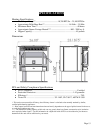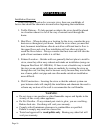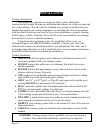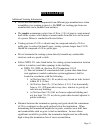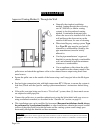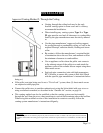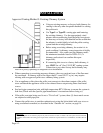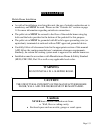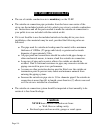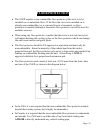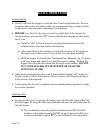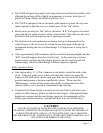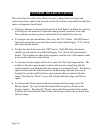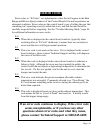
Page | 12
INSTALLATION
Approved Venting Method 3
: Existing Chimney System
• Using an existing masonry or factory built chimney for
venting is the only other acceptable method for venting
this pellet unit.
• Use Type L or Type PL venting pipe until entering
the existing chimney. Use the appropriately sized
adapter when transitioning from the pellet vent pipe to
the masonry or factory built thimble and be certain that
the adapter is sealed tightly to both the pellet venting
system and the existing chimney.
• Before using an existing chimney, be certain it is in
good condition (A chimney sweep inspection is highly
recommended). Also, make sure the chimney meets
the minimum standards listed in NFPA 211 (A
chimney professional can confirm this upon
inspection).
• If connecting this stove to a factory built chimney, it
may ONLY be a 6” flue, UL103 HT venting system.
Connection to any other factory built chimney may
result in a poorly operating or dangerous stove installation.
• When connecting to an existing masonry chimney, the cross-sectional area of the flue must
be considered. A chimney with a flue larger than 6” round (28.27 sq. in.) may require
relining with an approved pellet stove chimney lining system.
• Use an appliance collar where the pellet vent connects to the exhaust output of the pellet
stove and attach the appliance collar to the exhaust blower output using three sheet metal
screws.
• Seal each pipe connection joint with high temperature RTV Silicone, to ensure the system is
leak free (Check with the specific pipe manufacturer’s instructions before doing so).
• If the pellet vent pipe being used is not a “Twist Lock” system, three (3) sheet metal screws
are required at each pipe joint.
• Connect the pellet stove to outside combustion air using the kit included with your stove or
using an alternative method, as described in the “Outside Air” section, on page 14.
Please Note:
Installation diagrams are for reference purposes only and are not drawn to scale, nor meant to be used as plans for each individual
installation. Please follow all venting system requirements, maintain the required clearances to combustibles, and follow all local
codes.




